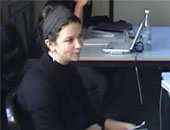Loop.pH - Rachel Wingfield
Loop.ph's Rachel Wingfield has joined the *variable environment* research project in november (27.11 - 01.12.06) for a week of workshop about reactive patterns and ornementation.
Rachel Wingfield is also currently a research fellow at Central St-Martins in London. She's graduated from the Royal College of Art with a MPhil in Textile and her interests (as well as the ones of Mathias Gmachl, co-founder of Loop.pH) goes into biomimetics, patterns and smart patterns as well as sustainable products or built environments.
-
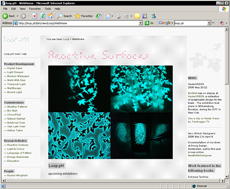
-
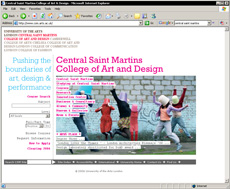
Posted by patrick keller at 18:20
"Language of Pattern" a workshop by Rachel Wingfield
Ar&D, 2nd and 3rd year MID students Workshop with Rachel Wingfield
Monday 27th November to Friday 1st December 2006
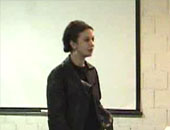
Brief workshop presentation by Rachel Wingfield
ecal 27th Nov 2006 - 40min (flash8 video)
Introduction
The aim of this one-week project is for you to explore and challenge your interpretation of pattern in the environment. It is an opportunity to consider the natural environment and design scenarios that synchronise technology with temporal patterns within nature. The workshop will question the deeper meanings of decoration and ornamentation as well as highlight the importance of a craft discipline.
Context:
Nature
Nature is a vast source of ideas to learn, understand and be inspired by, rather than a source of materials to be extracted, converted then discarded. A new design agenda can be realised through developing environmental wisdom, cooperating with nature rather than working towards its extermination.
We can experience the cycles and signs of our natural environment on every sensory level from the change in humidity and atmospheric pressure to the fragrance and vision of flowering plants. As urban, built landscapes consume a natural ecology it becomes increasingly difficult to read these signs. Looking at Nature in this way it can be seen as the prime example of an ambient display.
Ambient displays or devices can be understood within the context of computation with ubiquitous and pervasive computing, and is based on the ability of the brain to perceive information and pattern at an apparently low cognitive level. An example being the project by Loop.pH called Buried Light where wallpaper is used as a patterned interface that visually communicates domestic energy consumption.
Textiles & technology
The proliferation of textiles has historically played a significant role in the development of technology and today the relationship between the two is ever more important. Miniaturisation of technology allows wireless communication devices, microprocessors and sensors to be embedded into everyday textiles and familiar objects.
Through a wide range of emergent technologies, the process of ‘making’ in the creative field is becoming increasingly virtual and mechanized with the limitations of computation often overlooked. No computed simulation works identically to physical materials. Textiles are deeply rooted in a craft discipline where extensive ‘hands on’ training and knowledge of materials are often passed down through generations. Technology and computation should be viewed as simply another set of materials to be skillfully manipulated in a similar way to the more familiar textiles, yarns and filaments.
An integral part of the textile discipline is pattern both structurally and in the context of ornamentation and decoration. It is also a principle deeply embedded in the natural world. The human brain is finely attuned to recognising pattern and is built upon the notion of familiarity and evolution. The universe can be understood as a shared and interconnected pattern.
Part 1.
To prepare for initial meeting on Monday afternoon (27 Nov)
1. Bring a collection of images (minimum 6) that demonstrates the proliferation and ubiquity of textiles.
2. Start thinking about natural phenomena and how patterns can be perceived and understood in cycles of time. Research and identify a minimum of two different and specific natural cycles based on Biology and an area of science called phenology – a study of the times of recurring natural phenomena. A broad example being the response of living organisms to seasonal and climatic changes in their environment, such as the migration patterns of birds and floral blooms in spring.
Part 2.
Design a scenario for a time based ambient display based on a chosen natural cycle using textiles and surfaces as the interface. The textile should express and work in synergy with the environment. It could be an architectural intervention, an object, or a collection of interconnected textiles within a chosen context. Your environment could be domestic, public or natural – this is very much up to you. Consider how decoration and ornamentation is currently used in the built
environment, as this could be a starting point to expand upon. Pattern should be used as the principle tool to recognise and apply interconnectedness with environmental wisdom.
Create a narrative through the use of sketches, models, animation or film that informs the audience as to how a textile/object could reconcile humans with the natural environment. Question how technology and man made interventions can be used to extend this relationship. This should be presented to the group on Friday the 1st December.
By the end of the workshop you should have the beginnings of a design proposal and a developed research question that you may wish to explore further. Consider the following quote by the German artist Hans Haacke as inspiration for your scenario development. He is referring to his chosen material of living plant matter.
make something which experiences, reacts to its environment, changes, is non-stable...
... make something indeterminate, which always looks different, the shape of which cannot be predicted precisely...
... make something which cannot 'perform' without the assistance of its environment...
... make something which reacts to light and temperature changes, is subject to air currents and whose function depends on the forces of gravity...
... make something which the 'viewer' handles, with which he plays and thus animates...
... make something which lives in time and makes the 'viewer' experience time...
... articulate something natural...
Hans Haacke, Cologne, 1965
Download the brief pdf file
Posted by |BRAM| at 17:15
Workshop's result: Lunatic Room
Project by Eric Morzier & Camille Scherrer
Video Presentation (11min flash8)
-
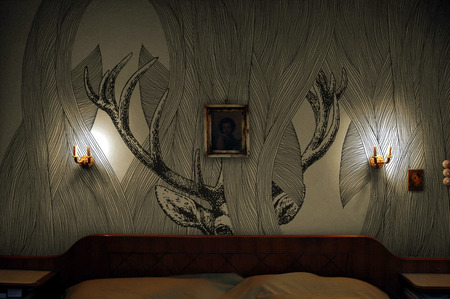
The Lunatic Room is a magic bedroom influenced by the moon cycles.
Curtains, wallpapers and bed textiles are used as displays.
The main goal of this project was to let the nature's strengths come deep inside our environment and make us more aware of mother nature...
PATTERN RESEARCH
-


-
material references

PROJECT PROPOSAL
-
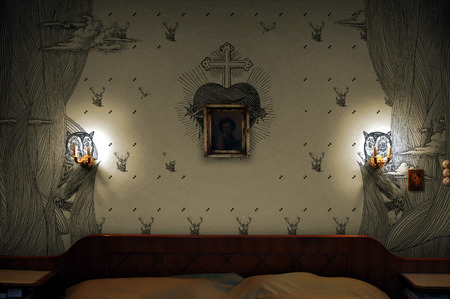
-
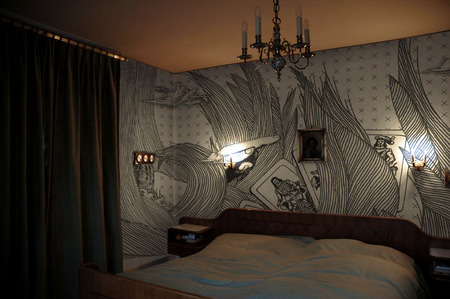
-
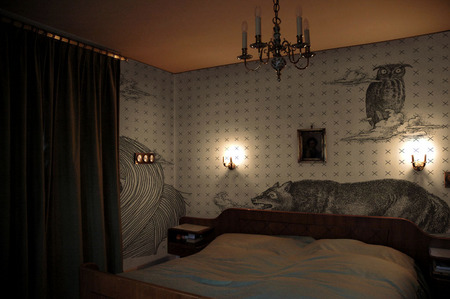
The moon cycle lasts 29 days (new moon is the first day, full moon on the 15th day, etc.) and as we all know, the moon affects the nature (tides, earth tides, etc.) and according to different mythologies, superstitious sayings, and almanacs, each day of the moon has some particular effects on different things around us and on our behaviour and body.
As the bedroom is the place where we spend the most of our night time, we decided to explore different possibilities of making the room protective and informative about what’s going on under the moon rays.
Then we have chosen to work with curtains, tapestries and bed covers as a display:
• Curtains are more or less a shield against moon rays.
• The bed cover is acting as a radiograph which displays the weak bodies.
• Wallpapers are working as an almanac showing all the superstitions and mythologies.
We took three cases as examples:
• 3rd day (new moon): According to almanacs, it’s a harmful day for humans, death is around but it’s a good day to start a new business. It’s also a bad day for eyes, teeth and blood circulation in hands. Good for plants and sowing.
• 15th day: The full moon is purifying blood and people are turning mad. It’s good to cut your hairs under the moon rays. The cry of the owl means the anguish of sick people. Be careful of the wolves in the woods.
• 27th day (last quart): Favourable to the stomach, it’s a good day for baby conception. Animals are ready to be hunted, go hunting and fishing. Let you hairs grow but exposing yourself under moon rays may turn you ugly. It’s often a lucky day.
We can easily adapt this room to other phenomena like atmospheric pressure, seasons, migrations, etc.
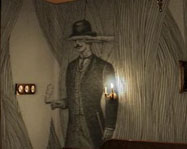
Animation_1 (flash8)
-
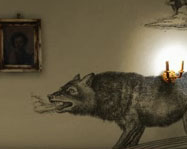
Animation_2 (flash8)
Reference
the almanach

Posted by |BRAM| at 16:32
Workshop's result: How nature can be resumed to a simple mathematical formula
Project by Florian Pittet & Margaux Renaudin
Video Presentation (15min flash8)
-
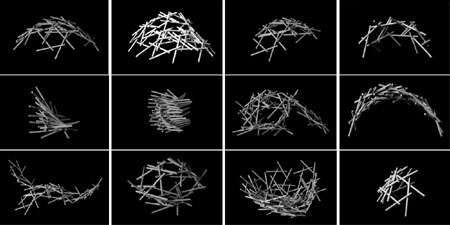
The idea is to create a whole living structure: Using light as a protector and as a living manifestation, the structure interact with the walker that pases threw her by sensors, and glows all around him.
PATTERN RESEARCH
-


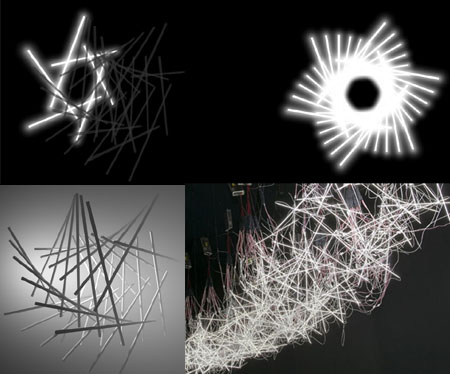
- We first developed textures and experimentations with illustrator and processing, to synthesise this fact of mathematical rules.
- Then we try to observe nature in it’s more synthetically way by understanding cellular automata and creating different patterns.
- We created few processings applets that respond to a stimulation by opening themselves, just like a flower or an anemone.
Then we noticed that the light gets more intense when the pattern is completely developed. The processing pattern could be developed by the presence of somebody which can be surrounded by light. Using light as a visible but untouchable protection, and using a natural mathematical pattern to work on the development process of light, how light can sew a pattern around us, using interactivity.
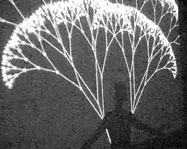
Video test patern 1 (mov)
-
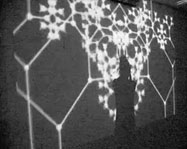
Video test patern 2 (mov)
-
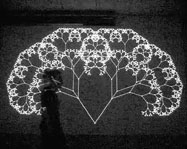
Video test patern 3 (mov)
PROJECT PROPOSAL
-

-
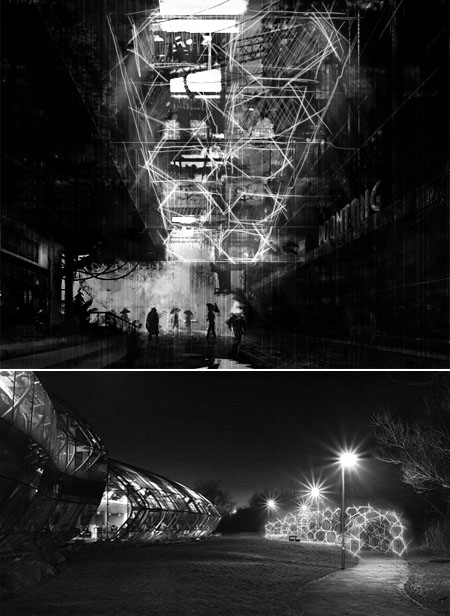
Neon lights animation (mov)
- We use light always as a common «dead» thing, as something impalpable.
But sometimes, light is not just enough physical, just as you pass threw a dark path, a tunnel, or a park by night. You use light as a guide. But you don’t feel protected by seeing what’s still dark, off the path. So we are looking for dark places that evoke fear or frightens.
Light will play an essential role by creating a cocoon that follows the human, by a gradual glowing light cycles, using a new kind of neon tubes that can fade out and have a more organical kind of light.
Structures can be supported by a kind of skin that can tense the volume or follows the movement of the structure.
Download pdf (45Mo)
More information about the development of this project can be seen on
http://www.sigma6.ch/florian/index.php
reference links
http://www.blogmarks.net/marks/tag/tensegrity
http://www.newciv.org/Synergetic_Geometry/tjbug.htm
http://www.kennethsnelson.net
http://web.fm/twiki-bin/view/Hiaz/BuckminsterFuller
http://lib.fo.am/cgi-bin/view/Libarynth/BuckminsterFuller
Posted by |BRAM| at 16:25
Workshop's result: Thermawall
Project by Vincent Jacquier, Guilhem Moreau & Aude Genton
Video Presentation (12min flash8)
-
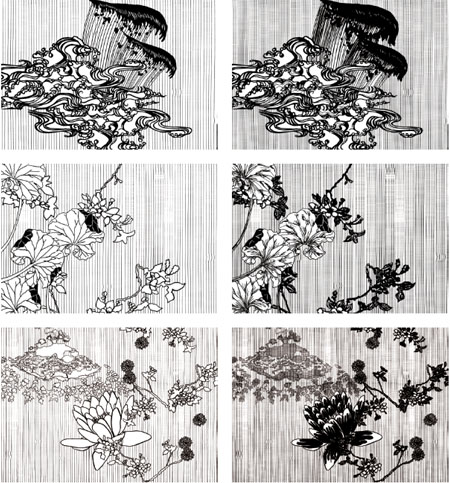
We were at first interested by the thermic loss phenomenon in the context of domestic spaces, thermic over-consummation and isolation problematics.
Our plan therefore was to use a thermo chromic (ink disappearing at a customisable threshold temperature) for its self sustainable characteristics.
The idea was to display through the apparition of different level of complexity in patterned wallpaper the thermic loss/consummation in your domestic environment.
Our research was an exploration of complexity trough patterns, spatial modification with optic-art and sense of communication through the design of patterns.
PATTERN RESEARCH
-
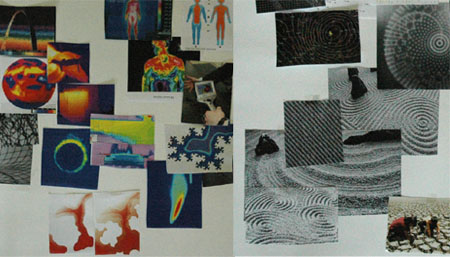
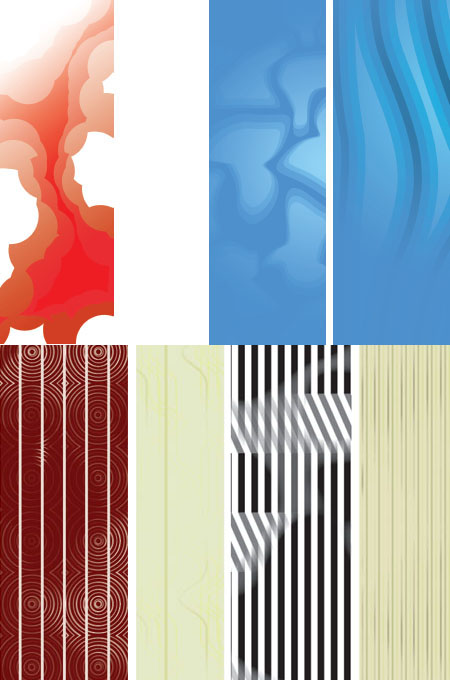

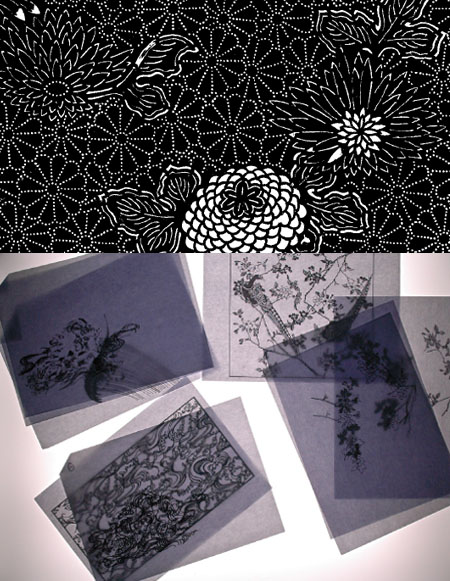
-
Ink layers
The optimum temperature for a domestic home has been scientifically defined around 18°C, a warm domestic interior is therefor define under 25°C and an excessive temperature treshold above 30°C.
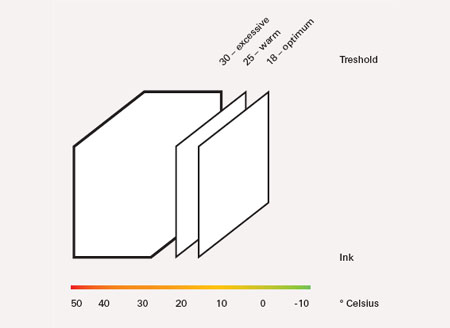
PROJECT PROPOSAL
-
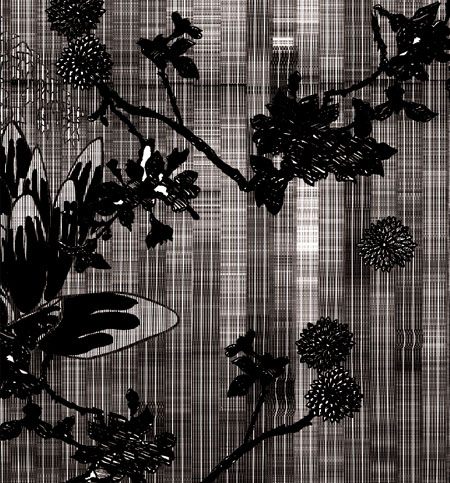
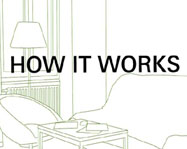
How it works (flash8)
Posted by |BRAM| at 16:10
Workshop's result: Traffik
Project by Lionel Tardy & Grégory Aegerter
Video Presentation (15min flash8)
-
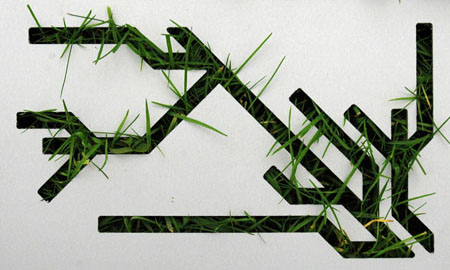
This project is a research about the link between construction and nature, concrete and grass.
We tried to integrate patterns into anti-noise walls highways. Those patterns can be composed by grass or reactive material to gas and other harmful diffusions.
These patterns can be used to warn drivers to drive at a certain speed limit.
PATTERN RESEARCH
-
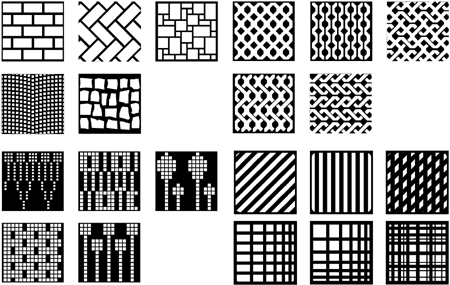
-
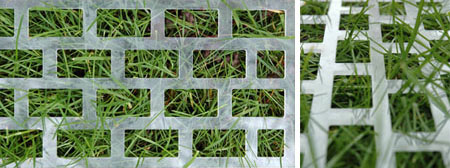
Real grass growing animation (flash8)
PROJECT PROPOSAL
-
Grass Simulation
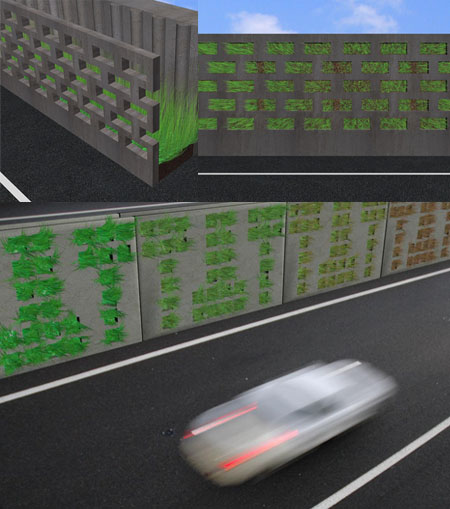
Grass growing animation (flash8)
Speedway animation_1 (flash8)
Speedway animation_2 (flash8)
Highways + sensitive paper
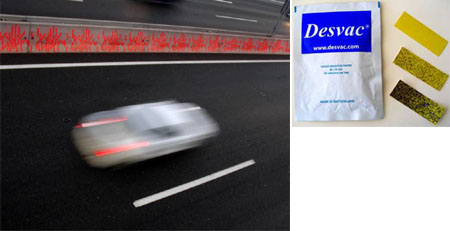
Highway + sensitive paper animation (flash8)
References

-

Posted by |BRAM| at 14:30
Workshop's result: Dust (Screen)
Project by Lucien Iseli & Marc Hottinger
Video Presentation (12min flash8)
-

-
The aim of this project is to set up a control system of a dust ecosystem in a closed or domestic space.
How to deal with dust?
How can you do something creative although it is known as harmful?
A small as well as a big quantity of dust is known as harmful!
Here you have a project which proposes you a system that self-manages your dust based on pattern (persian carpet patterns) elaboration.
PATTERN RESEARCH
-
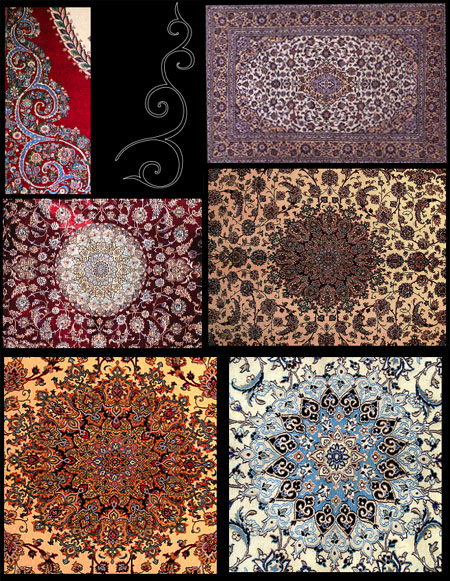

PROJECT PROPOSAL
-
dust acumulation and animation tests

Dust animation tests(flash8)
-
video proposal
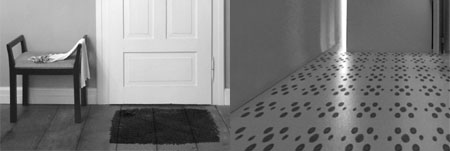
Dust animation patterns(flash8)
-
Posted by |BRAM| at 11:40


